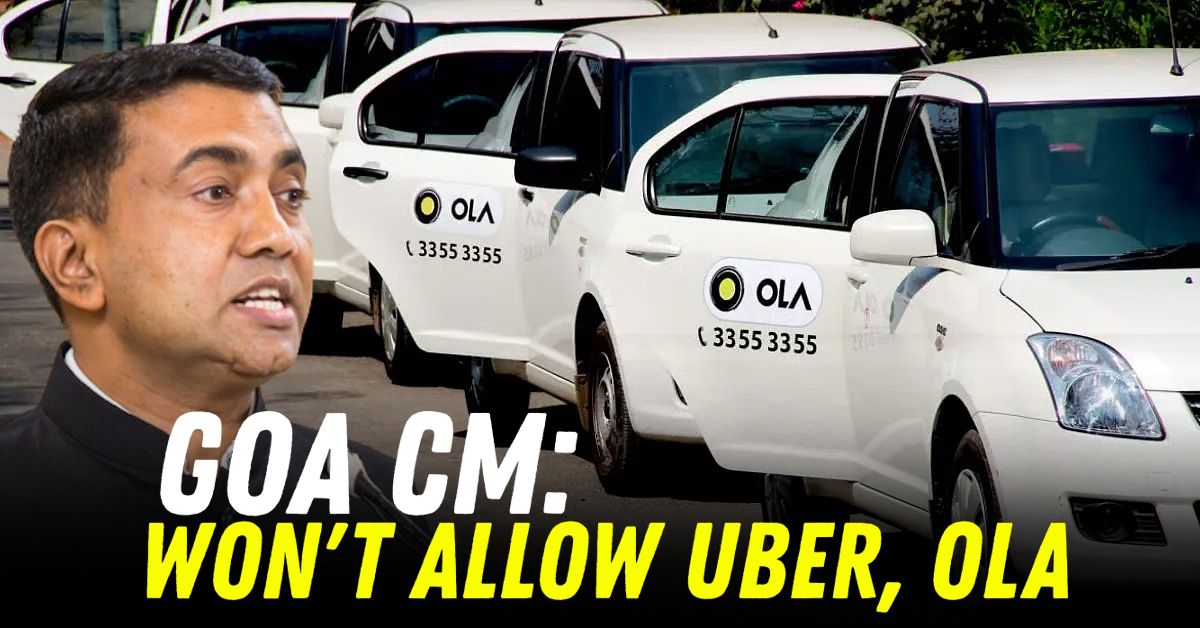No Entry To Ola, Uber In Goa: Chief Minister Pramod Sawant!


In most parts of the country, hailing a cab is just a matter of tapping a screen. But in Goa, India’s most visited beach destination, that convenience remains conspicuously absent. Despite repeated rumours and public expectations, neither Ola nor Uber is entering the Goan market anytime soon. A recent government clarification once again put the matter to rest: there is no proposal to allow app-based taxi aggregators to operate in the state.
This decision, which appears surprising on the surface, is rooted in a complex web of local economics, political resistance, and deep-seated turf wars between traditional taxi operators and the forces of change.
Goa's strained relationship with ride-hailing platforms is not new. For nearly a decade, tourists and locals alike have wondered why app-based services like Ola and Uber, which operate seamlessly in metros and even Tier 2 towns, have failed to make inroads into a tourist-heavy state like Goa.
The reason lies in the stronghold of local taxi unions. Goa’s taxi system is largely controlled by independent operators who have historically opposed any move that threatens their monopoly.
These drivers operate without meters, charge fixed (often inflated) rates, and are fiercely protective of their business model. While this has led to a somewhat chaotic and opaque pricing structure, it has also created a tightly-knit ecosystem where any external disruption is treated as an existential threat.
Over the years, taxi unions have staged protests, blocked roads, and even threatened strike action whenever discussions around Ola or Uber surfaced. Past attempts to pilot ride-hailing services were either short-lived or quietly shelved after facing aggressive backlash.
In a recent session, Transport Minister Mauvin Godinho firmly stated that the government has no plans to allow ride-hailing apps to operate in the state. He pointed out that Goan taxi operators have launched their own platform, “Goa Taxi App”, which should ideally address issues of convenience and transparency.
On paper, this looks like a reasonable compromise. But in practice, adoption of the Goa Taxi App has been slow and riddled with glitches. Tourists complain of long wait times, unresponsive drivers, and pricing that doesn’t always reflect real-time demand or distance. Most significantly, the app lacks the scale, user experience, and trust that national-level platforms like Ola and Uber bring.
Yet, the government has chosen to back this local solution over global players. The reason is simple: political expediency. With elections never too far away, upsetting a large bloc of local taxi drivers is not something any ruling party wants to risk.
Goa welcomed over 80 lakh domestic and international tourists last year. With limited public transport and erratic local taxi services, the absence of app-based options makes mobility difficult for visitors. Stories of tourists being overcharged or struggling to find a cab late at night are common. For those used to cashless, predictable pricing from apps, navigating Goa’s taxi scene can be a frustrating ordeal.
Local residents, too, feel the pinch. Students, professionals, and the elderly have long complained about the lack of affordable, reliable transport. While self-drive rentals have gained popularity, they don’t replace the convenience of a cab ride after a late-night event or a medical appointment.
Ironically, there’s no lack of demand. Ride-hailing services could thrive in Goa, especially during peak tourist seasons when the roads are crowded and the need for last-mile connectivity spikes. Industry observers believe that a well-regulated model could strike a balance, offering tourists and locals the reliability of technology-driven services while protecting the livelihood of traditional taxi drivers.
Online discussions across social media outlets have frequently raised the point that integration, not replacement, is the answer. Instead of banning apps altogether, the state could enforce licensing rules, fair commission structures, and strict geofencing to ensure harmony. Other tourist destinations, like Kerala and Himachal Pradesh, have experimented with mixed models where local taxi operators are onboarded onto national platforms, reaping benefits of both reach and control.
For now, though, the standoff continues. The government’s firm stance leaves little room for negotiation in the short term, and taxi unions remain unrelenting. Until there is a shift in political will or a dramatic overhaul of the local mobility landscape, tourists will have to continue relying on offline arrangements, pre-booked tours, or rental scooters to get around.
Goa may be India’s favourite destination, but for now, it remains firmly off the map for app-based taxis.